Paintings have found a place as an integral part of Indian culture. Paintings in the artistic and religious form are both considered to be central to our knowledge about Indian history. They are the best depictions of visual art in India. Miniature paintings of India, as the name suggests, are small yet intricately designed paintings.
Painted on cloth or paper, the common themes of these paintings are mythological incidents and religious texts, though it differs for every artist. The foundation of miniature paintings in India can be traced back to the 9th century, but they reached their glory at the time of Mughal rule in India. The tradition of these paintings is now taken forward by artists from Rajasthan, Mewad, and many other places.
History of Miniature Paintings In India
Buddhist Pala period that existed in India around the 9th-10th century was when the miniature paintings came into being. Earlier they were painted on leaves, but with the advent of paper in the 12th century, artists began creating these paintings on paper.
They reached their peak when the Islamic civilization started to flourish in India. Akbar’s extreme love for the arts helped miniature paintings combine elements of the Persian style of painting and also hints of European paintings. After the decline of Mughals in India, this art form received patronage from the rulers of Rajasthan. The themes of these paintings revolved around the royal lifestyle and mythological stories.
Top 7 Schools of Miniature Paintings
Starting from the Buddhist Pala period, numerous schools of miniature paintings developed in India as time passed by. The paintings of these schools were inspired by the areas to which they belonged, the social and political system of that area, population, and many other factors. Let us have a look at some of the primary schools of miniature paintings:
1. Pala School
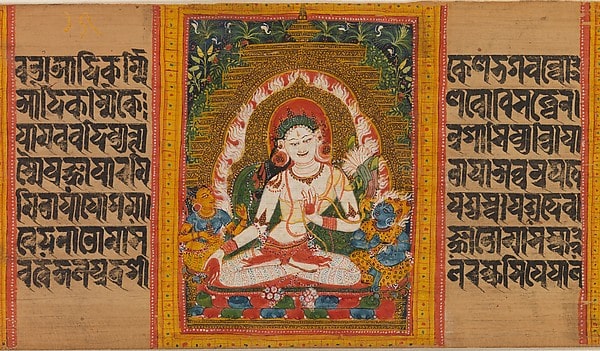
This is the oldest school of miniature paintings in which Buddhist religious texts were represented around the 8th and 11th century. The artists of this school used palm leaves and strips of cloth and arranged them in the format of a book. This also gained popularity in Sri Lanka, Nepal, Tibet, and other neighbouring places.
The art from Pala school can be recognized because of the symbolic use of colours and skilful line drawings. The colours used for these paintings were derived from natural sources. The themes revolved around the life of Lord Buddha and other deities.
2. Jain School
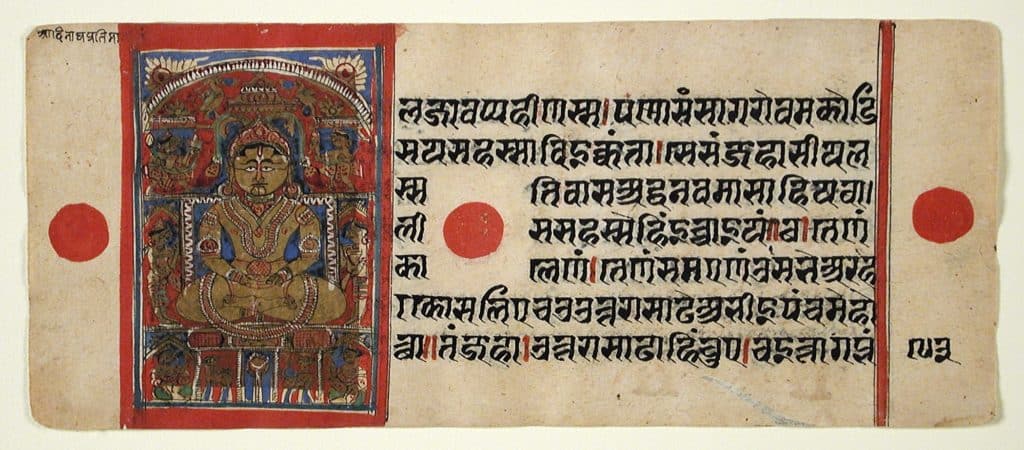
This laid great emphasis on style and evolved in the 11th century. The distinguishing feature of these miniature paintings were heavy golden outlines and figurines with large eyes, square-shaped hands, and pointy noses. Religious texts like ‘Kalpa Sutra’ and ‘Kalkacharya Katha’ were depicted by these paintings. This was the first school of miniature painting to switch from palm leaves to paper.
The central theme of these revolved around Tirthankara. The figures were shown laden with heavy jewelry. Lesya, the concept of mental attitude paintings, took birth in the Jain school of miniature paintings. In this, several people are shown who are trying to achieve the same thing by considering different ways. Gold and silver were also used in these paintings.
3. Mughal School
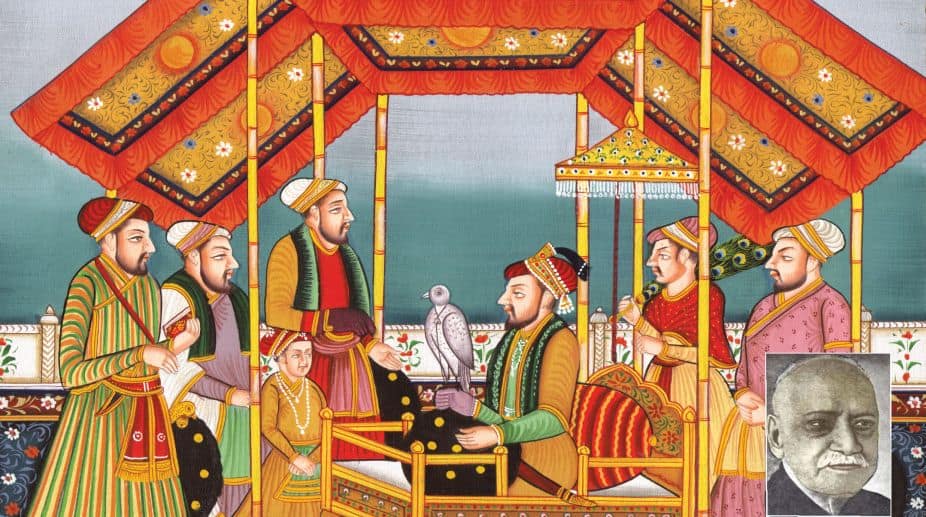
Miniature paintings enjoyed a high status during the rule of kings like Akbar, Shahjahan, and Jahangir. The paintings of this time saw the influences of Islamic and Persian culture. The work was delicate and detailed.
The central themes were court scenes, wildlife, wars, etc. Emperor Jahangir’s wife, NurJahan, was very fond of art and miniature paintings received great patronage from her. The artworks under Mughal rule has strong narratives. Bold colours were used in the paintings, and some of them even inspired painters who later came up with depictions of Hindu epics like Mahabharat and Ramayana.
The two most celebrated artworks that came up during this time were ‘Tuti Nama’ and ‘Hamza Nama.’ Aurangzeb ended all forms of art when he took the throne. After him, Bahadur Shah tried to revive it but failed miserably. This was the end of Mughal school of miniature paintings.
4. Pahari School
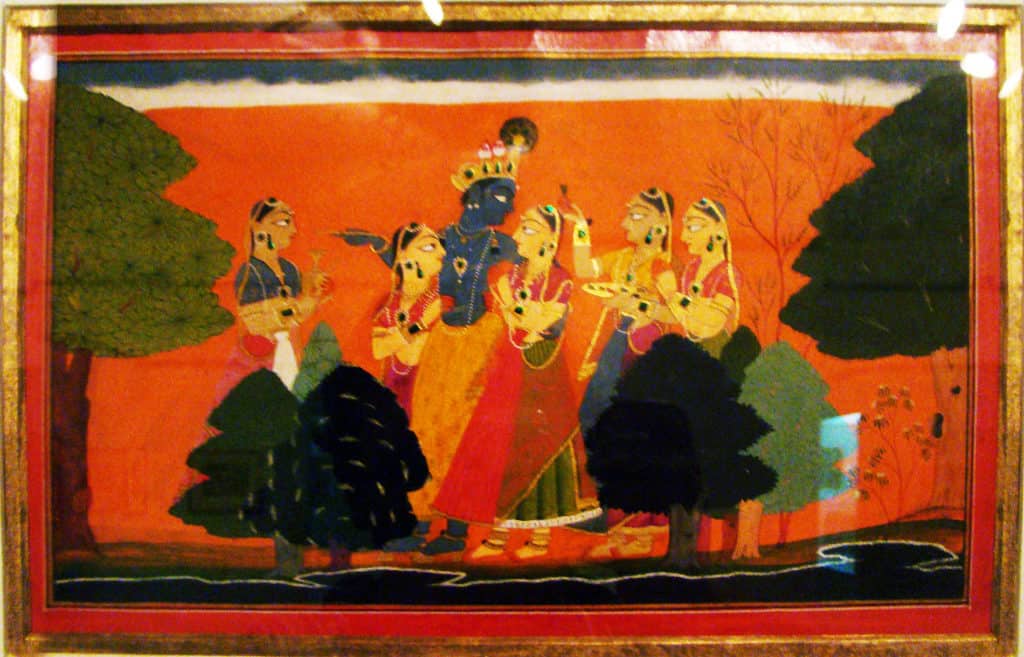
Originating in the 17th-19th century in the Himalayan kingdoms of North India. The most popular places of Pahari school of miniature paintings were Mankot, Kangra, Garhwal, to name a few.
This school was greatly influenced by the Mughal school and was supported by Rajputs. Some other schools that come under the term “Pahari School of Miniature Paintings” are- Basohli school, Kangra school, Chamba school, and Garhwal school. Each school had a unique variation to offer.
For example, Basohli school originated from Jammu and Kashmir and was characterized by intense and bold patterns. Work from Kangra school mainly depicted Lord Krishna and Radha together.
The grandeur of Himalayas was also a common scene in these paintings. The wave of Bhakti movement during this time made gods, goddesses, divinity, and love popular themes for paintings of this time.
Also Read: Cave Paintings In India
5. Rajasthani School

The timeframe of decline of the Mughal school and rise of Rajasthani school is the same. Like the Mughals, Rajputs were also great lovers or art and culture and fully supported the Rajasthani school of miniature paintings. Even though this was greatly inspired by the Mughal school, the themes of Rajasthani school revolved around the life of kings, royal life, basically, all things royal!
Colours were extracted from natural sources and formed a striking feature of these paintings. Figurines were drawn on bold backgrounds, and semi-precious and precious stones were often used to decorate these intricate works of art. The canvases of these paintings were often ivory, paper, and silk.
The brushes required for this are said to have been made from the hair of squirrels. Miniature paintings from Kishangarh, called Bani Thani paintings, are a famous spin-off of Rajasthani school, depicting the divine love between Krishna and Radha.
6. Orissa School
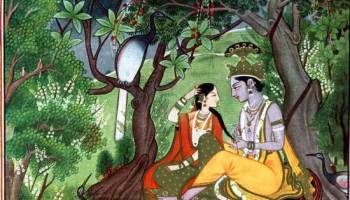
This school was born in 17th century A.D. The representations of these paintings are Lord Krishna and Radha. These depictions are inspired by “Krishna Leela” and “Gita Govinda.” All works show the love between them and are beautifully designed using skill and technique.
Many of them also show incarnations of Lord Vishnu. Even though few pieces of evidence have been found from this school, one of the most famous ones shows Radha and Krishna standing near a large tree. These are mostly done on palm leaves. Striking landscapes of India are also shown in some of them.
7. Deccan School
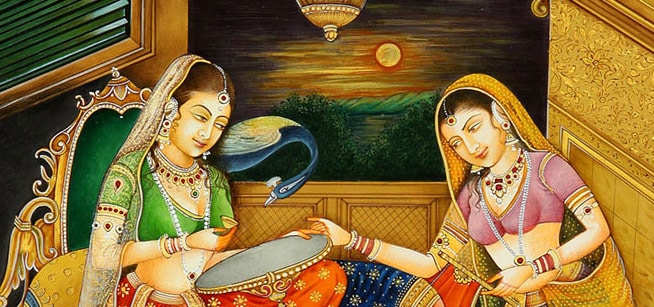
Relatively new, this form of miniature paintings emerged from Hyderabad, Golconda, Tanjore and other nearby areas in 17th-19th century A.D. The works of this school show the heavy influence of Turkish, Iranian and Persian culture. The artisans were people who had migrated from Mughal areas to Deccan.
The striking feature of these paintings are the figures of ladies whoa re shown with sensual bodies, large eyes, and beautiful faces. Bright colors were mainly used, and the multi-dimensional effect was created.
Another distinguishing factor is that unlike the customary pictures of animals, trees, and lifestyle, this school developed artworks that showed buildings and other human-made structures.
Miniature Paintings in India have held high importance as a significant conveyor of the era that has gone by, and all these schools of miniature paintings are proof of how significant art has been in Indian culture.
Hope the above article gave you detailed insights on the art form.To know about other art forms in India stay connected on https://yehaindia.com










The picture of Radha Krishna in Section of Orissa School is in Kangra School of Pahari School. I think so.